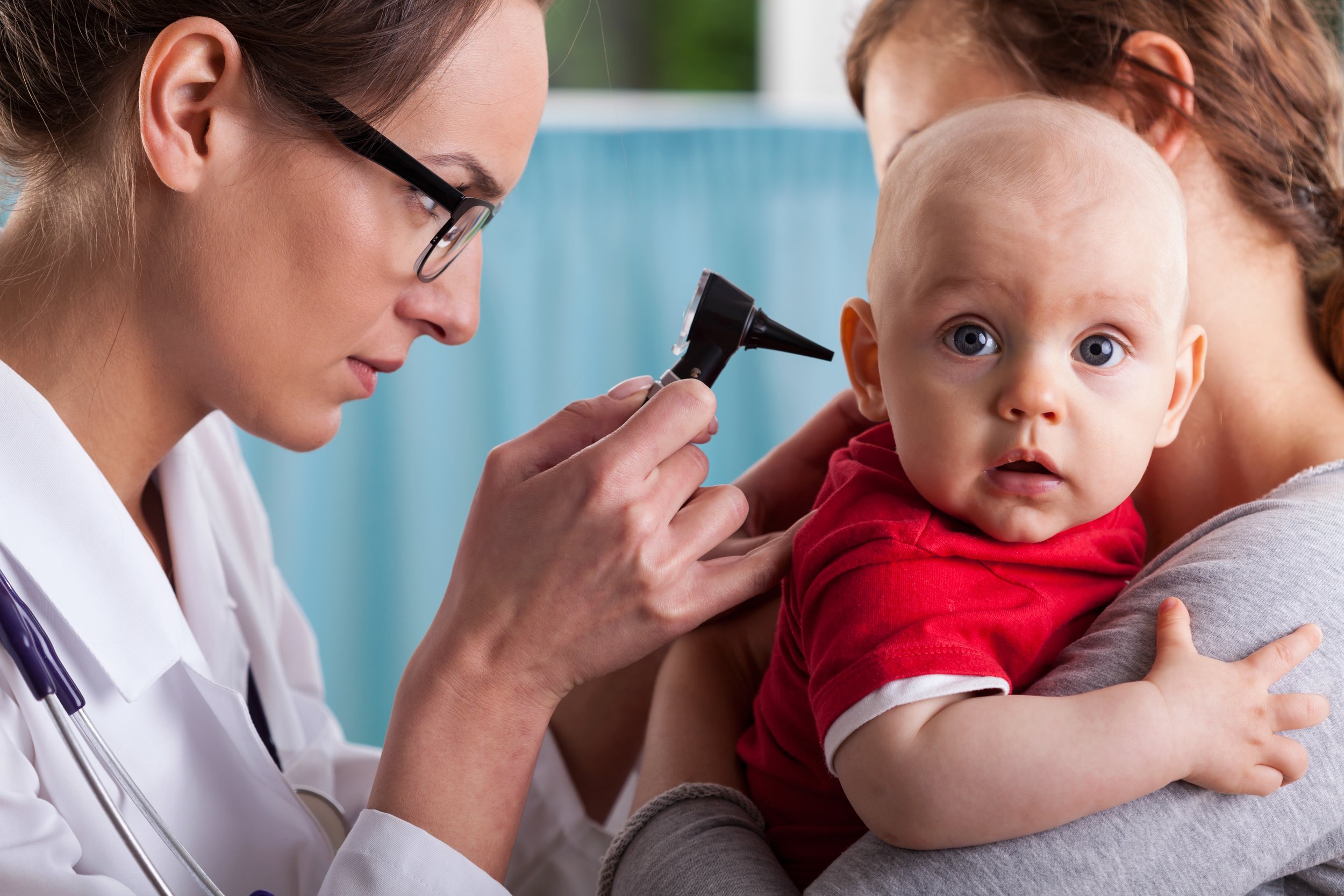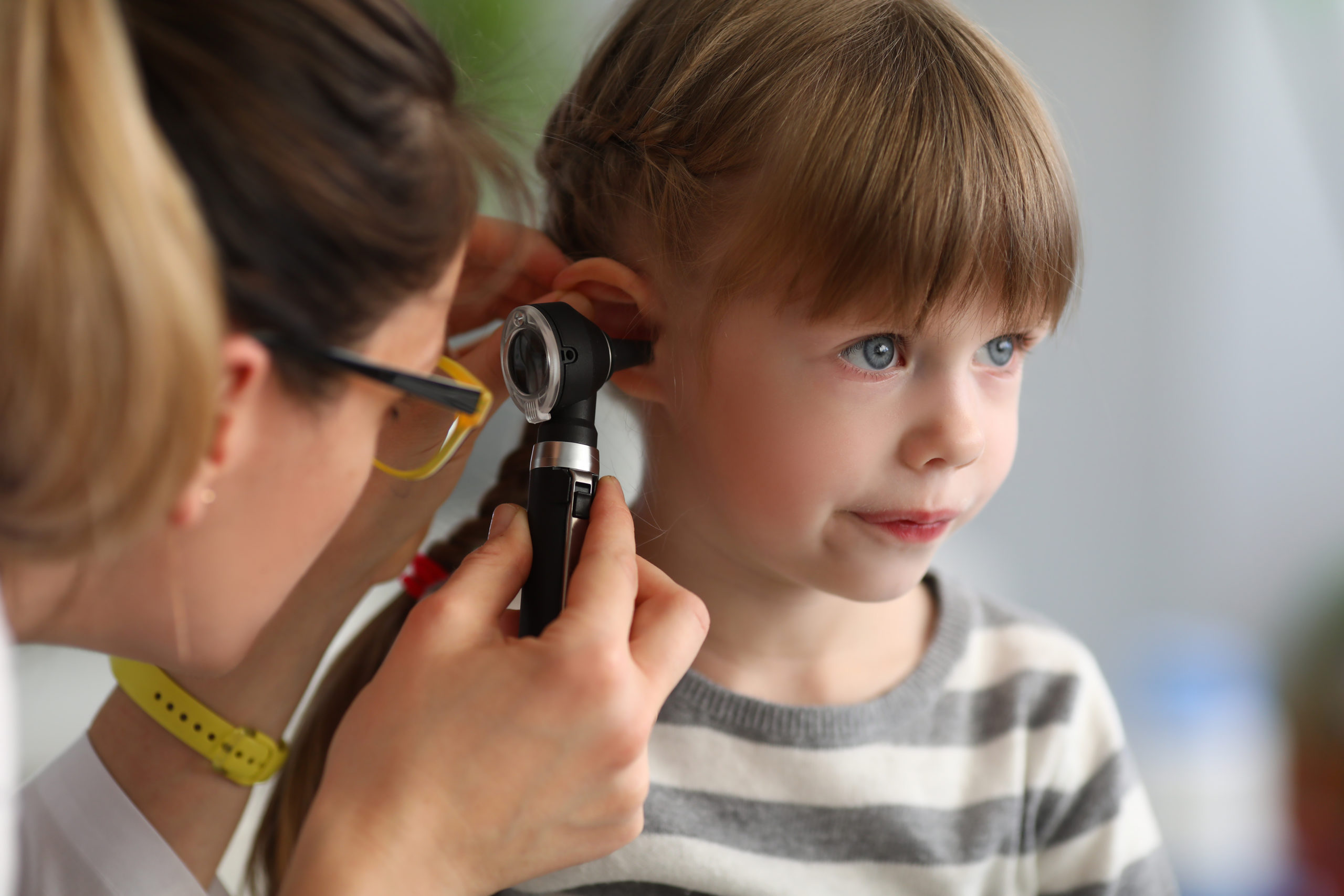What should I know about ear infections in young children?
Ages 0-5
Middle ear infections are the most common cause of earaches in children. Nearly five out of every six children will experience an ear infection before their 3rd birthday. The infections develop when bacteria or viruses infect fluid that builds up in the middle ear. The buildup is caused by congestion that blocks the natural channel (eustachian tube) that allows air and fluid to go in and out of the middle ear. Normally, when the ear infection has run its course, the fluid drains out of the middle ear into the back of the nose through the eustachian tube. Sometimes this fluid doesn’t go away because the eustachian tube remains swollen and can’t open.
Do ear infections happen with colds?
Ear infections tend to happen following a cold, so if your child has recently had a cold you will want to watch for these signs:
- Ear pain/ear pulling
- Fever — even a slight fever can be a sign of an ear infection
- Appetite is reduced — an ear infection can make swallowing or chewing painful
- Difficulty sleeping — lying down can make an ear infection more painful
- Yellow or white-ish fluid draining from the ear, which is a sure sign of infection
- Unpleasant smell near or in the ear
- Difficulty hearing — fluid trapped behind the eardrum causes hearing loss because it prevents the eardrum and hearing bones from vibrating normally
Do ear infections need treatment?
Some ear infections clear up on their own. The pain usually subsides within a day or two. Clearing fluid from the ear may take much longer. However, some infections need an oral antibiotic taken for seven to 10 days. It is best to see your pediatrician to determine the need for an antibiotic.
How many ear infections are too many? When does my child need ear tube surgery?
Your child’s doctor may recommend ear tubes if one or more of the following conditions are present:
- Fluid in the ears for more than three or four months following an ear infection
- Fluid in the ears and more than three months of hearing loss
- Changes in the actual structure of the eardrum from ear infections
- A delay in speaking
- Recurrent or chronic ear infections (otitis media)
Tubes are generally recommended when a child has three infections in six months or four infections in one year. A child with an ear infection may have trouble hearing, and the problem could continue for several weeks after the infection clears. Watch for the following behavioral changes that may signal that the child isn’t hearing well: talking softly, saying “huh?” or “what?” more than usual, not responding to sounds, and turning up the television or radio louder than usual. Contact your pediatrician if your child is having trouble hearing. Being able to hear and listen to others talk helps a child learn speech and language. This is especially important during the first few years of life.
Certain children such as those with severe recurring ear infections, trouble hearing and/or speech delay after multiple ear infections, or other complications from ear infections may benefit from ear tubes. Surgically inserted through the eardrum, these small tubes make it easier for fluids to drain from the ear.
What are ear tubes?
Ear tubes are small tubes that are surgically placed into the eardrum to help ventilate the middle ear and prevent recurrent ear infections. They help drain the fluid out of the middle ear to reduce the risk of ear infections. They are the size of a pen tip and are typically made of silicon or plastic.
Ear tubes allow time for the child to mature and for the eustachian tube to work more efficiently. By the age of 5 years, the eustachian tube becomes wider and longer, allowing for better drainage of fluids from the ears. The tubes usually fall out on their own after six to 12 months.
How can I reduce my child’s risk of getting an ear infection?
There are a lot of factors that are associated with an increased risk of ear infections. Those risk factors are exposure to cold viruses, secondhand smoke and bottle feeding. If parents can eliminate those risk factors — by washing hands frequently, having no smokers in the home or secondhand smoke exposure, and using a sippy cup instead of a bottle — they can reduce the risk of ear infections for children. Additionally, research shows that breastfeeding also reduces the risk of ear infections as well as vaccinations, including the flu vaccine.
Taking these steps are the best ways to reduce the potential for recurring ear infections in your child.
Dr. Ashika Sharma is a dual board-certified pediatrician and sports medicine physician who currently practices at ActiveKidMD in Anaheim Hills. Please visit activekidmd.com or follow her on Instagram @peds_sportsdrsharma and @activekidmd.










Leave a Reply